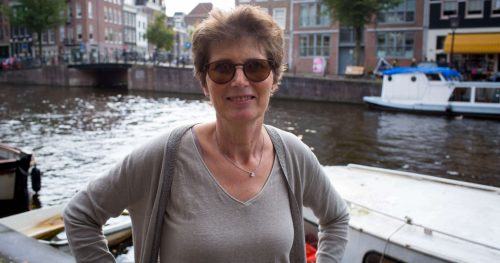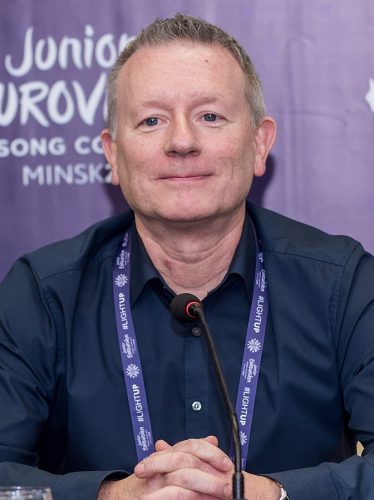“Mr. Clifford Brown!?”, 1969 Eurovision host Laurita Valenzuela called with panic in her voice. Four entries ended up in first place. It was event supervisor and scruteneer Clifford Brown who cleared up things: there were, in fact, four winners.
Today, we learned that in 2021, Martin Österdahl will take over the job from Jon Ola Sand. But already the first Eurovision Song Contest had an event supervisor. We take a closer look at the men and women who did the job before Österdahl.
Rolf Liebermann was the first one in 1956 and 1957. At the first ever Eurovision Song Contest, Liebermann was the chairman of the jury. That makes him the man who has seen the complete result of the 1956 Eurovision Song Contest. However, he never revealed the secret. Liebermann passed away in 1999.

Rolf Liebermann (© Claude Truong-Ngoc / Wikimedia Commons)
Miroslav Vilček took the job in 1964 and 1965. Vilček was a Slovenian man from Yugoslavia. 1964 was the first year that someone who was not invited entered the stage: a protester.
Clifford Brown did the job from 1966 until 1977. It was a tough time: Spain winning over the United Kingdom by one vote in 1968, four winners in 1969, only twelve participants in 1970. Eurovision almost died during his time as an executive supervisor, but it survived it’s worst year. Many different ways of voting came across, but the ‘twelve points’ started when he was there in 1975.
Frank Naef was the executive supervisor from 1978 until 1992; not a tough time at all, maybe with the exception of 1991. With Toto Cutugno as a host, who hardly spoke English and was hardly listening to anyone anyway, not coordinating the show at all, it was not easy for Naef. In the end, two countries were on the first spot. Immediately Naef explained why Sweden had won, and not France.

Frank Naef
Christian Clousen did the job for only three years, but not the easiest ones. In 1993, there was an Eastern European preselection and in the other years, countries faced degradation because of the high number of participants.
Christine Marchal-Ortiz did the job from 1996 until 2002, with the exception of 1997, when Marie-Claire Vionet took over the job. A lot of changes appeared during Marchal-Ortiz’ time: the orchestra and the language rule disappeared, the big 5 (in those days the big 4) came. Also televoting was new. She brought the contest into a new millennium.

Christine Marchal-Ortiz, ©Stijn Smulders, eurovision.tv
Sarah Yuen only took over for one year, 2003. It was the last year that the Eurovision Song Contest was broadcast over only one evening.
Svante Stockselius took over and showed a lot of enthusiasm about the contest. His first contest was the first one with a semifinal in 2004. He was also the one who saw the contest grow to a three night show. He was also the one who made an end to the 100% televoting.
Jon Ola Sand took over the job in 2010, 2011 was his first contest. The show made some major changes under Sand. For example, the following order of appearance was no longer decided by a draw. A lot of experiments with the voting were going on to make the show more exciting. That resulted, last year, in the moment that both Duncan Laurence and John Lundvik were hoping for a victory. 2020 will be Jon Ola’s last year.

Jon Ola Sand, ©Okras, Wikimedia Commons
From 2021 on, Martin Österdahl will take the job, as we mentioned earlier today.


